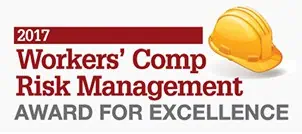When the calendar for the year is on its last few pages, it’s time to think about winterizing your roof. The cold months can bring all sorts of hazards that call for roof repair, so it’s always a good idea to make sure protection is in place before roof storm damage hits.
A thorough checklist can help avoid costly roof repair issues like hail damage roof situations, severe problems from sub-zero temperatures, heavy snowfall and routine issues with all aging roofs. Here are the key points to keep in mind.
Winterization Checklist
One: Clean the gutters and roof thoroughly
This is a task that should be on your “to do” list every year as winter approaches. There are lots of reasons for a thorough roof and gutter clean-out. For one thing, shingles are susceptible to fall victim to major buildup of algae. When low temperatures arrive, algae buildup takes on moisture, freezes and then expands, leading to possible cracks and related roof damage.
It’s always smart to minimize your roof’s exposure to harsh winter elements. That’s why a roof needs to be cleaned before winter. Washing away harmful algae is a vital part of the winterization process and can prevent serious roof repair issues later on.
As for gutters, they play a key part in the overall health of a roof by making sure water gets carried away quickly and efficiently. When gutters are clogged or damaged, they can’t do their main job and your roof suffers as a result. Rusty gutters and gutters that are the victims of blockage of any kind allow water to build up where it shouldn’t. That can lead to damaged timber, foundation problems, moisture buildup on the roof itself, and other unwanted scenarios.
So in addition to cleaning a roof before winter strikes, it’s imperative to make certain gutters are in good shape, aren’t clogged and are able to carry water away whenever it’s present.
Two: Pay a visit to the attic
There are just two things to do in your attic for winterization, but they’re crucial for preventing larger roof repair issues. One, make sure you have the right amount of insulation. Two, check to see that the insulation is able to do its job. Sometimes, old or deteriorated insulation is in place but is unable to keep extreme cold and heat out. When that’s the case, get rid of any insulation you find that appears to contain mold or feels damp to the touch.
Insulation is a wonderful thing unless it is damaged or in places where it shouldn’t be. That means you need to be certain that none of the insulation in your attic is blocking air vents. It’s only supposed to be on the eaves, not getting in the way of proper air flow. So double check insulation placement and condition. For houses that use “loose fill” insulation, check to see that it is distributed evenly.
Insulation is a smart way to cut down on energy costs. It has the added advantage of protecting your roof and making your home much more comfortable in winter and summer. As part of a comprehensive winterization program, you need to inspect the state of your attic’s insulation.
Three: Deal with “problem” tree limbs
Hail damage roof repair can happen during pre-winter rain storms or during any of the colder months. In fact, roof storm damage from tree limbs is one of the more common roof repair problems facing homeowners. Stop roof storm damage from hail, rain or snow by cutting away tree limbs that might be a problem.
This isn’t just an issue of “dead” limbs, but healthy ones too. Actually, any limb that has the chance to fall on your house during storms should be cut away before the winter season begins. Ice and snow can turn an otherwise harmless tree limb into a roof-destroying hazard. Prevent the cost of emergency roof repair by carefully removing limbs that have the potential to damage your roof.
Four: Have a professional inspect your roof
You can only do so much on your own, even though the three steps above are vitally important. There’s still a final piece to the roof winterization puzzle and that’s a professional inspection. Crest Exteriors has a wealth of experience when it comes to winterizing before the coldest months of the year threaten to do roof storm damage.
Homeowners who enjoy DIY projects often want to get up on their roofs and walk around during a winterization check. This is a bad idea for many reasons. First, it’s very dangerous for people who aren’t in the business of working on roofs. One wrong move and you could end up in the hospital. Why risk it?
Besides the obvious health concerns, it’s never a good idea to walk on a roof because it can cause all kinds of damage to the shingles and roof tiles. Professionals, like the team at Crest Exteriors, know exactly how and where to walk when working on a roof. So to prevent damage to your body and roof, let the professionals do the climbing.
Even if you haven’t had a professional inspection in a while, schedule one as soon as possible. It’s one of the most cost-effective ways of preventing future roof repair issues. An inspection can help extend the life of the roof and add to the efficiency of your home’s energy usage. That’s always a smart move
Minimize roof repair costs with a winterizing plan
A seasonal roof checkup is crucial for overall structural health. Hail damage roof repair, roof storm damage, and a wide range of winter weather hazards can cause otherwise healthy roofs to age more quickly when winterization programs are not in place.
So make a point to stop hail damage roof problems in their tracks by taking commonsense steps right now to avoid roof repair issues that can be avoided. Go through the checklist and have a professional team member from Crest Exteriors help you “tick all the boxes” on your roofing protection plan. The time to act is now.



